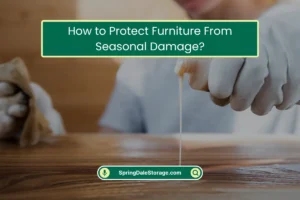Look, I’ve been turning wrenches for 20 years and I’ve seen more tools ruined by stupid storage mistakes than by actual use. Last month, my neighbor asked me to look at his “broken” impact wrench. Opened the case and – surprise – the battery had leaked all over the contacts. $200 paperweight because he left it sitting in his damp basement.
Here’s what actually works, straight from the shop to your garage:
Why Your Tools Are Dying Prematurely?
- Battery Suicide – That lithium-ion battery you left in the drill all winter? It’s not just dead – it’s actively destroying your tool from the inside. I’ve cut open enough swollen batteries to know this isn’t scare tactics.
- The Condensation Death Cycle – Your metal tools sweat more than a rookie mechanic on his first brake job. That morning dew inside your garage? It’s microscopic rust forming right now.
- Dust is Worse Than You Think – That layer of sawdust isn’t just messy. It’s absorbing moisture and holding it against your equipment like a sponge. I’ve seen drill chucks freeze solid from this.
Real-World Storage That Actually Works
For Tools You Use Weekly
- Hang them on shadowboard with battery OUT (magnetic strips work great for this).
- Wipe down with ATF-soaked rag (cheaper than “protectant” sprays and works better).
- Keep a rechargeable dehumidifier running in your toolbox (the Eva-Dry ones actually work).
When Storing for Months
- Full autopsy – Remove every battery, bit, and accessory.
- Real cleaning – Brake cleaner for metal, isopropyl for electronics.
- Protection that lasts – Cosmoline for long-term, Fluid Film for seasonal.
- Smart storage – Vacuum seal with oxygen absorber for real protection.
Battery Care That Doesn’t Suck
- Store at 2 bars charge (not full, not empty).
- Use ammo cans with silicone packs (military surplus works perfect).
- Label storage dates (batteries expire whether you use them or not).
- Test voltage monthly (if it drops below 3V/cell, it’s garbage).
Salvaging the Already-Damaged
For Corroded Battery Contacts:
- Neutralize with Coke (the drink, not the… never mind).
- Scrub with brass brush (steel is too aggressive).
- Protect with NO-OX-ID grease (what the power companies use).
For Seized Tools:
- ATF/acetone mix (50/50) penetrates better than commercial products.
- Heat gun + wax trick for frozen chucks (melt paraffin into the threads).
- Electrolysis tank for heavy rust (old batteries + washing soda).
When Your Garage Just Won’t Cut It
Here’s the uncomfortable truth – most home shops are terrible for tool storage. The $50 storage unit down the road? Probably worse. That’s why we built our tool storage space with:
- Positive pressure ventilation (keeps dust out).
- Vibration-proof racks (no more fallen tools).
- Humidity-controlled environment (set to 45% – the sweet spot).
- 24/7 access (because projects don’t care about business hours).
The Hard Truth About Tool Longevity
Your grandpa’s tools lasted decades because:
- They were simpler.
- He actually maintained them.
- They weren’t filled with electronics that hate moisture.
Modern tools need more care, not less. Spend 10 minutes now or 10 hours later fixing preventable damage. Your choice.
Got a storage trick that actually works for safety? I want to hear it – but spare me the “keep them dry” nonsense. We all know that’s not enough. And if you’re tired of replacing good tools, maybe it’s time to store them like they’re actually valuable.













0 Comments